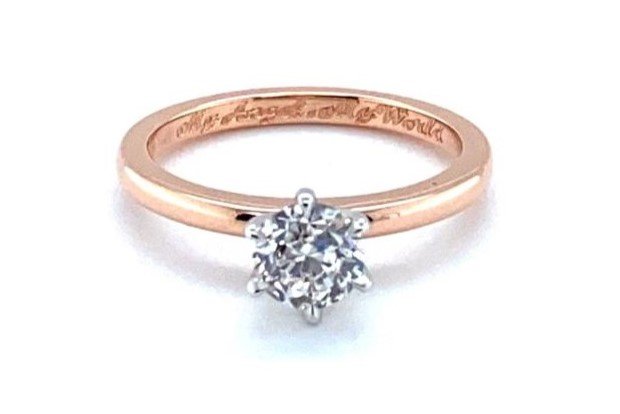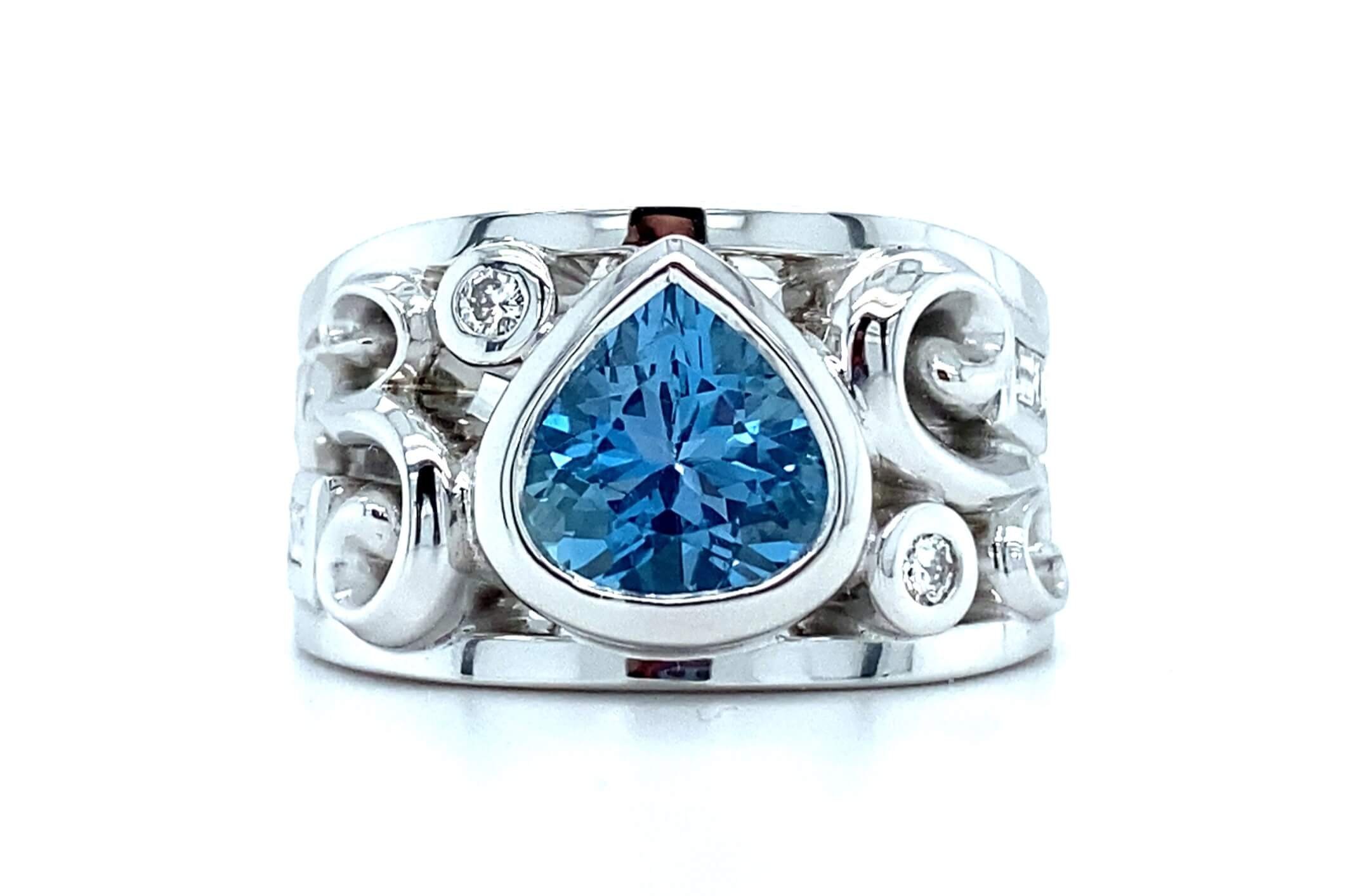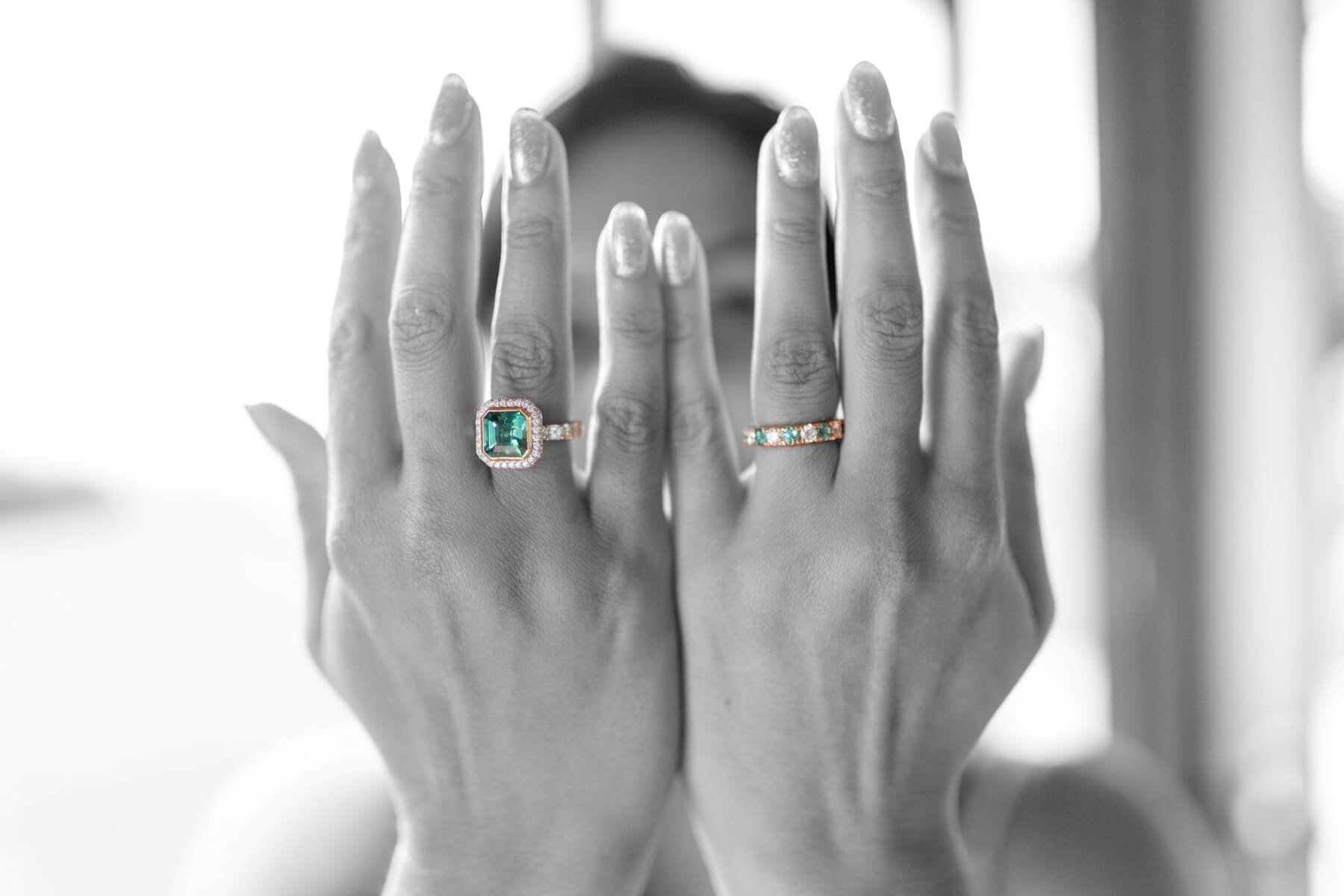SARA HANDMADE JEWELLERY
Tanzanite
Australian made
20 Years experience
Ethically sourced gemstones
Created to last a lifetime
What is Tanzanite?
There’s nothing quite like a tanzanite. The best Kashmiri sapphires may come close, but they still don’t quite capture the tanzanite’s dreamy vivid midnight blue hues with violet undertones.
Tanzanite was first discovered in 1967 by a Maasai tribesman in the Merelani Hills of Tanzania. It was identified as the blue and violet variety of the mineral zoisite and immediately caused a stir in the gem world. It was named after the country in which it was found by Tiffany & Co and launched on the market with a major ad campaign in 1968.
Where is Tanzanite From?
Part of the allure of tanzanite is that it is still only found in one place in the world: a small strip of land in Northern Tanzania around 7km long and 2km wide. Since 1971 the mines have been the property of the Tanzanian government, who split them up into four blocks. The largest, Block C, is estimated to have the biggest reserves, but these are expected to be exhausted by 2040. Recently, tanzanite has been marketed as the ‘gem of a generation’ because it is only in this generation that you will be able to purchase one direct from its source.
Originally tanzanite was found on or near the surface. Today tunnels lie around 1000 meters below the earth. The gem is found in small pockets in boudins, cylinder-like structures within deformed pegmatites, a coarse form of igneous rock. Boudins usually lie next to each other and are joined by short necks which makes them look like a string of sausages, which is why they take their name from ‘boudin’, the French for sausage.
Bespoke Tanzanite Jewellery
Few gems can rival the violet blue hues of a tanzanite set in a piece of bespoke jewellery.
What Our Customers Say
What Colour is Tanzanite?
Tanzanite is defined as the violet-blue to blue-violet variety of zoisite. Generally, however, tanzanite comes out of the ground a brownish colour and needs to be heat treated to reveal its blues and violets. The original tanzanite crystals found by Maasai tribesmen were blue and not brown because they’d been exposed to a natural heat source within the earth. Heat treatments after mining in effect mimic natural forces that can occur below ground.
Tanzanite has a property called pleochroism, which means that it can show different colours when looked at from different directions. After heat treatment to remove yellow-green, both red-violet and deep blue tones are visible when a stone is tilted back and forwards. The final face-up colour of the stone is strongly dependent on the choices of the stone cutter.
Tanzanite is also affected by light, with cool fluorescent making it seem bluer and warm incandescent increasing its violet appearance.
Is Tanzanite Expensive?
The most desirable tanzanite is a strong blue to violet-blue colour and the more intense and vivid the colour, the more coveted the stone. These stones are, however, rarer than their paler cousins and prices per carat reflect this.
Unlike many other gems, heat treatment has no effect on the value of a tanzanite. It is so common that it is generally assumed that stones will have been treated. In addition, it is effectively impossible to determine whether a tanzanite has been heated by the earth or by a human.
Even though tanzanite is far rarer than a blue sapphire and able to rival it in terms of colour, it is nowhere near as popular and therefore relatively more affordable.
Is Tanzanite Good for Jewellery?
Tanzanite only rates a 6 to 7 on the Mohs hardness scale, has fair to poor toughness and a tendency to break when struck (otherwise known as cleavage). This is why we advise against using it in engagement rings as they will likely receive heavy daily wear.
With the right setting and a bit of care tanzanite can form the centrepiece of some pretty spectacular jewellery. Pendants and earrings are all excellent vehicles to show off your tanzanite, as are dress rings. For rings especially, we recommend bezel settings to help protect the gem against knocks. Tough accent stones like diamonds can also help to keep your tanzanite safe.
Our Services
Sara Handmade Jewellery offers bespoke jewellery, custom designs and everything in between to keep you sparkling
-

Bespoke & Custom
Have a piece jewellery custom designed and created just for you. Become a part of the design process for your new special piece.
-

Engagement Rings
We will find the perfect gemstone to create you an engagement ring that expresses your love and will be treasured forever.
-

Jewellery Remodelling
Have family heirlooms, sentimental jewellery and unworn pieces remodelled into something new. Add gems and give the design your own personal touch.
-

Repairs & Restoration
Repair or restore your damaged jewellery to look like new. Resizing, rhodium plating, re-tipping as well as replacing damaged and missing gemstones.
-

Dress & Cocktail
Big, bold and beautiful dress rings designed to make a statement. We can help you create your own bespoke statement ring.
-

Gemstone Sourcing
We will find the precious and semi-precious gems you are looking for in any colour, size, shape or clarity.
FAQs on Tanzanite
-
It is not as durable as other stones so we do not recommend it for engagement rings. It is wonderful stone for all other types of jewellery though.
-
Tanzanite is one of the birthstones for December.
-
Tanzanite is the gemstone for the 24th wedding anniversary.
-
Heat-treatment of tanzanite is routinely performed to change brownish stones to the blue/purple colour that is so desired by the market. It is a stable and lasting treatment that does not affect the integrity of the stone.
-
Yes, we are happy to help clients restore their damaged tanzanite jewellery. This could be as easy as unsetting the stone for a simple polishing or, if needed, we can source a replacement stone. We will also advise you on the best settings to avoid future damage.
Get in touch
Get in touch to book an appointment, ask us a question or start creating the perfect piece of jewellery.






